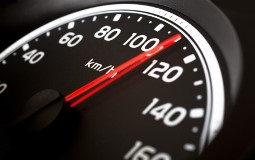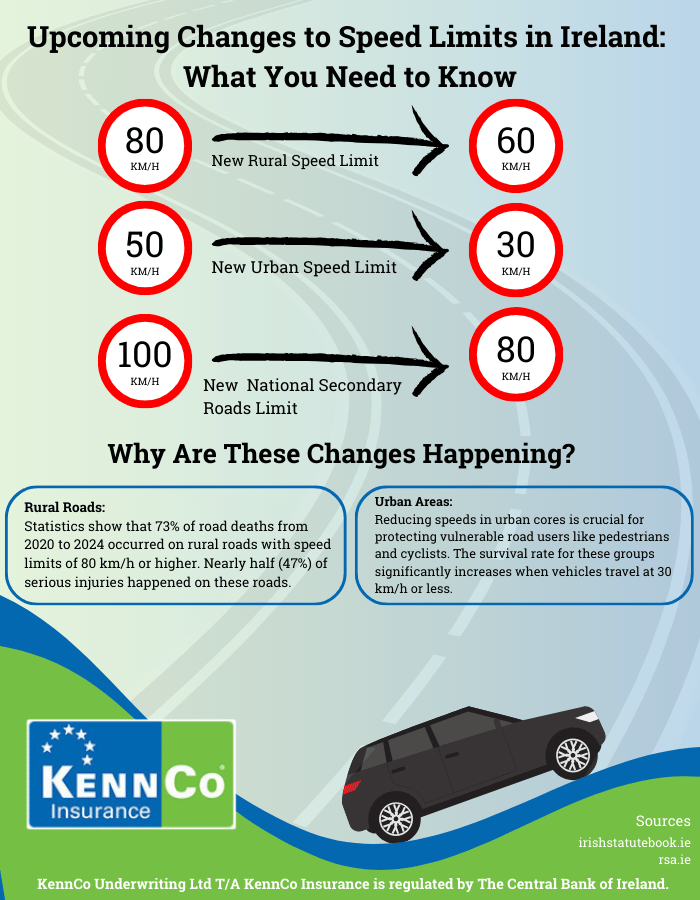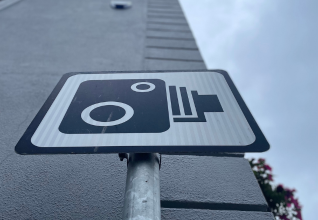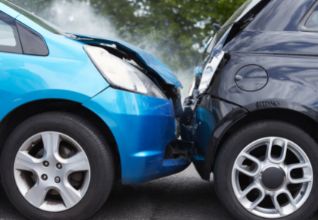
Speed limits are an important part of road safety as they help to regulate and maintain the flow of traffic across all different types of roads in Ireland, and are vital for reducing accidents and protecting drivers, cyclists and pedestrians.
In recent years, there has been growing awareness of the impact speed plays in accidents and fatalities on our roads. With research showing that 10-15% of all road collisions, and 30% of all fatal collisions, are due to driving at inappropriate speeds. To combat this, the Irish government has introduced significant updates to the speed limits on Irish roads as part of ongoing efforts to improve road safety across the country.
In this post, we’ll look at the updates to speed limits in Ireland, how they affect drivers, how they are enforced and why speed limits are such an important aspect of road safety.
Changes to Speed Limits in Ireland
From February 7th, 2025, significant changes to speed limits came into place for rural local roads, reducing the speed limit from 80 km/h to 60 km/h. Rural, local roads or L Roads are any roads that are not motorways, national roads or regional roads. They start with an L and have four- or five-digit route numbers, e.g. L1234.
L roads generally connect smaller villages, towns or residential/agricultural properties. They typically have narrower lanes, less frequent signage and can often be in need of repair.
While rural roads often have lower traffic volumes, they can be extremely hazardous for drivers; with research showing that almost three in four road deaths (73%) reported in Ireland from 2020-2024 occurred on a rural road with a speed limit of 80km/h or greater.
These changes are part of a broader government initiative to improve safety and reduce accidents, particularly in rural areas where road conditions can be more unpredictable.
Later in 2025, motorists can expect further speed limit updates to come into place targeting urban areas and secondary roads across the country.
The speed limit in urban zones in 2025, including residential areas, city centres, towns and housing estates, will see the introduction of a 30 km/h speed limit – reduced from 50km/hr. With the change designed to make urban areas safer for pedestrians, cyclists and children who are often at greater risk from vehicle collisions in built-up environments.
In addition to the changes in urban areas, the speed limit on Ireland’s secondary roads are set to see a reduction from 100 km/h to 80 km/h later in 2025.
The new speed limits form part of the Irish government’s strategy to improve safety and reduce the number of injuries and fatalities on Irish roads, as outlined in the Road Safety Strategy 2021-2030 and Vision Zero.
The changes are expected to help reduce the number of road accidents and fatalities in rural areas, where most fatalities have historically occurred. The government aims for a 50% reduction in road deaths and serious injuries by 2030, with the speed limit changes supporting this goal.

Understanding the New Speed Limits
As the changes come into force, it’s necessary for drivers in Ireland to understand and comply with the new speed limits. Speed limits are communicated through road signs and it’s essential to know what each sign means and where the new limits apply.
Speed Limit Signs in Ireland
In Ireland, speed limits are indicated using circular road signs with black text on a white background. The most common speed limit signs you’ll encounter are:
- 120 km/h (Motorways): The highest category of road in Ireland. Motorways have their own specific set of restrictions and are prefixed with an “M” followed by a by 1 or two digit number, e.g. M50.
- 100 km/h (National Primary Roads): This is the standard speed limit for national roads that connect major urban centres, such as motorways. They start with prefix prefix “N” followed by 1 or two digits.
- 80 km/h (National Secondary Roads): These roads typically connect towns and rural areas and carry more traffic than local roads but are secondary to primary roads. National secondary roads use route numbers higher than those used for primary roads, but with the same “N” prefix, e.g. N51 and N52.
- 80km/h (Regional Roads): In Ireland, regional roads are roads that do not form a major route but still form a link in the national network connecting urban and rural areas. They are generally marked with an “R” followed by a three digit number, e.g., R684.
- 60 km/h (Local Roads): This is the updated limit for local rural roads that was introduced on February 7th.
- 50 km/h (Built-up Areas): This speed limit applies in town centres and areas with significant pedestrian activity, such as near schools or shopping centres.
New Signs for Rural Local Roads
As part of the changes implemented in February 2025, new signage was introduced for rural local roads. This sign features a white circle with five diagonal black lines, accompanied by the phrase “Go Mall / Slow”. It is used to indicate the new reduced speed limit of 60 km/h on these rural roads.
Additional Speed Limit Markings and Changes
In addition to these standard speed limit signs, drivers should be on the lookout for signage that indicates temporary or special speed limits. For example, some roads near schools or high-pedestrian areas may display signage for reduced speed limits of 30 km/h.
Why Speed Limits in Ireland Matter
Speed limits play a critical role in road safety and reducing traffic-related incidents. And drivers who are found to be driving above the specified speed limits face strict consequences in the form of penalty points, fines and, in severe cases, driving bans.
Understanding why speed limits matter can help drivers recognise the importance of staying within the posted speed, even when it feels like a minor inconvenience.
Reducing the Risk of Accidents
One of the most significant reasons for setting speed limits is to reduce the risk of accidents. Excessive speeding is the biggest contributing factor in road deaths and accidents in Ireland. Driving at high speeds increases the likelihood of losing control, especially on poorly maintained roads or when faced with the unexpected.
Research consistently shows that speed determines the fatality risk for pedestrians; and that driving at lower speeds can reduce both the frequency and severity of accidents.
Protecting Pedestrians and Cyclists
Another key reason for speed limits is to protect the most vulnerable road users like pedestrians, children and cyclists. Lower speed limits can help to reduce the chances of serious accidents or fatalities if a child or pedestrian is struck – especially in urban areas where accidents involving cyclists and children are more likely to occur.
The new 30 km/h zones planned for 2025 in urban cores will help to ensure that vehicles are moving slowly enough to allow pedestrians to cross, while reducing the risk for kids and cyclists.
How Speed Limits Are Enforced in Ireland
Speed limits in Ireland are legal requirements set out in the Road Traffic Act and failing to adhere to the posted speed limits is a breach of the law.
The Gardaí are responsible for enforcing speed limits and traffic laws across Ireland.
They have the authority to stop vehicles and issue fines and other penalties for speeding violations. In the first five days of 2025, more than 1,000 drivers were caught speeding by Garda policing the roads.
Gardaí may use radar guns to monitor speeds and whether drivers are exceeding the legal speed limit. Additionally, Gardaí regularly conduct speed enforcement operations across the country, particularly in areas where speeding is more likely to occur or where road safety has been identified as a concern.

If you’re caught speeding by Gardaí, you may receive a fine or penalty points on your driving licence, depending on how serious the incident. In serious cases, such as excessive speeding or dangerous driving, the Gardaí may seize vehicles or seek to prosecute the driver in court.
- Fines For Speeding: Drivers caught speeding can expect a fixed charge fine of €160. This can and will increase to €240 if not paid within 28 days. And a further failure to pay the second fine within 28 days (56 days of the initial fine) will result in a court summons and potential fines of up to €1,000. However, drivers can avoid this outcome by paying €320 (twice the sum of the original fine) no later than 7 days before your specified court date.
- Penalty Points: If you are caught driving over the speed limit, 3 penalty points will be added to your licence. This can increase to 5 points on conviction in court. Accumulating penalty points can have negative effects on your driving record and may also lead to higher insurance premiums and, potentially, the loss of your driving licence.
- Disqualification From Driving: Severe or repeated speeding offences can result in disqualification from driving.
Speed Cameras and Mobile Units
In addition to manual enforcement by Gardaí, speed cameras are widely used across Ireland to monitor traffic, enforce speed limits and act as a deterrent.
Fixed speed cameras are typically positioned on roads where speeding is a known problem, such as major motorways or urban areas. These cameras automatically detect the speed of passing vehicles and issue fines to drivers who exceed the speed limit.
Speed Limit Changes in Ireland: Key Points
Rural Local Roads – Speed Limit Reduced to 60 km/h
As of February 7th, the speed limit on rural local roads has been reduced from 80 km/h to 60 km/h to improve safety. This change affects roads that are often narrow and winding, where drivers need more time to react to potential hazards.
Urban Areas – New 30 km/h Zones in 2025
Later in 2025, the speed limit in urban areas will be reduced to 30 km/h in 2025. This change aims to protect pedestrians, cyclists, and other vulnerable road users.
Secondary Roads – Speed Limit To Be Reduced to 80 km/h
Also in 2025, the speed limit on secondary roads will be lowered to 80 km/h. These roads, which connect smaller towns and rural areas, should hopefully see a reduction in road accidents as a result of the changes.
Ireland’s Road Safety Strategy
The changes to speed limits in Ireland are being implemented as part of the Irish government’s Road Safety Strategy 2021-2030, in conjunction with Vision Zero. This strategy aims to reduce road deaths and serious injuries in Ireland by 50% by 2030.
Looking to Save On Your Car Insurance?
At KennCo, our car insurance cover offers competitive rates and valuable benefits, including a replacement car as standard. Get peace of mind knowing you’re fully covered.
Get a Secure Quote Today
